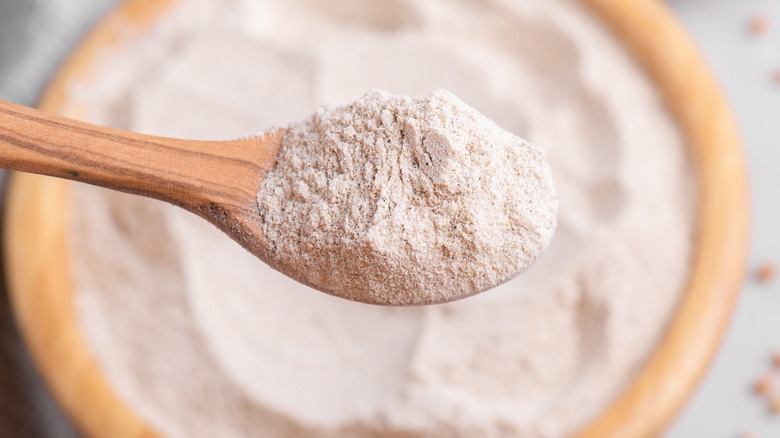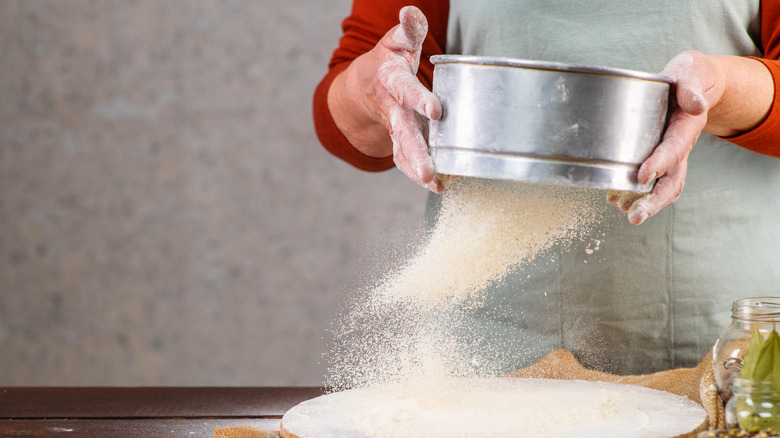Should You Refrigerate Flour?
First by hand and then by mills, humans have been grinding grain into flour since prehistoric times. Flour production quickly escalated when automatic mills were built in 1784, and novice and professional cooks alike have been dipping into packages of a variety of flours ever since (via How Products are Made).
Most flour is made from wheat kernels. Wheat flour contains gluten, those stretchy, elastic proteins that help create the chewy bread loaves you take out of your oven (via How Products are Made). Different kinds of wheat result in different kinds of flour: hard wheat has more protein and is usually used for bread-making, while soft wheat flour is better suited for cakes, and durum for pasta (via Food Source Information). All-purpose flour is most commonly found in household kitchens, as the blend of hard and soft wheat can be easily incorporated into recipes, but other starchy plants can be made into flour. Almond, amaranth, barley, buckwheat, corn, chickpea, flaxseed, oat, millet, peanut, potato, rice, and spelt flours can also be found in markets (per Food & Nutrition).
Flour is considered a raw agricultural product, according to Food Source Information, and can be enriched, fortified, or bleached. As with all food ingredients, how its stored can impact shelf life.
Fresher flour for longer
The goal is to keep flour cool, dry, and protected from small insects called flour weevils. The Flour Advisory Bureau recommends keeping flour in the packaging it came in or placing it in an air-tight container. According to Healthline, white flour can stay fresh for up to one year in the fridge, as compared to six to eight months on the shelf. Whole grain flours, on the other hand, won't stay fresh as long because the oils from the germ and bran in wholemeal flour accelerate the aging process.
To keep flour fresher for longer, Taste of Home suggests storing it in the freezer or refrigerator, especially if you live in a warm, humid environment or don't get around to making as many recipes as you'd like. Then, the next time you want to make a flaky pie crust, Masterclass advises home bakers to let the flour return to room temperature before incorporating it into any recipe — particularly if you're setting out to bake bread — as you want to make sure the flour will rise.

